This post may contain affiliate links. For more information, please see my full disclosure policy.
Sensory bins are, by far, one of the best ways for kids to learn through play.
They offer so many different learning opportunities and are about as hands-on as an activity for preschoolers can get.
Setting one up in your home or classroom is easier than you might think and the possibilities are truly endless.
They’ll introduce your students to new textures, give them opportunities to work on their fine motor skills, and really allow them to explore several of their senses!
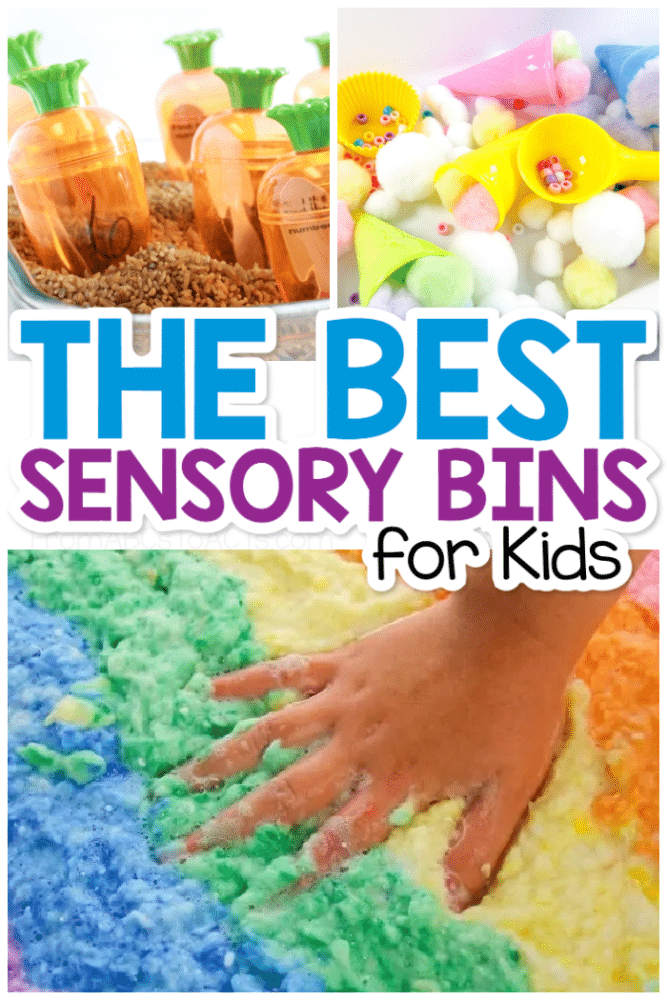
Sensory Play for Kids
As teachers, we don’t always have a lot of spare time on our hands.
We want to provide our students with a fantastic education, but there are just not enough hours in a day to add another complex thing to our to do lists.
Fortunately, sensory bins don’t have to be complicated at all!
In fact, sensory play can be as simple as homemade play dough and it will still provide your students with a ton of value.
Themed sensory bins do, of course, require a few more steps than pulling out a few cans of play dough, but those few extra minutes of your time and a little creativity will keep your students engaged and learning for hours!
What are sensory bins?
If you’ve never tried making a sensory bin for your students before, then you may be wondering what they are.
Sensory bins are, simply put, fillers of various textures like rice or beans, inside of a box, bin, or another container of some sort.
Our favorite containers to use for sensory bins are storage containers, or some other type of plastic tub, because they’re pretty sturdy and come in a bunch of different sizes.
Smaller sized bins are perfect for a single child to play in by themselves and larger (longer) bins or a large sensory table allows multiple children to play together at the same time.
What you really want to keep in mind when picking out your sensory bins containers is that regardless of how many children you plan to have using the bin at one time, it should be shallow enough that your students can reach into it to play, while still being deep enough for children to play in it without all of your filler spilling out over the sides and making a gigantic mess.
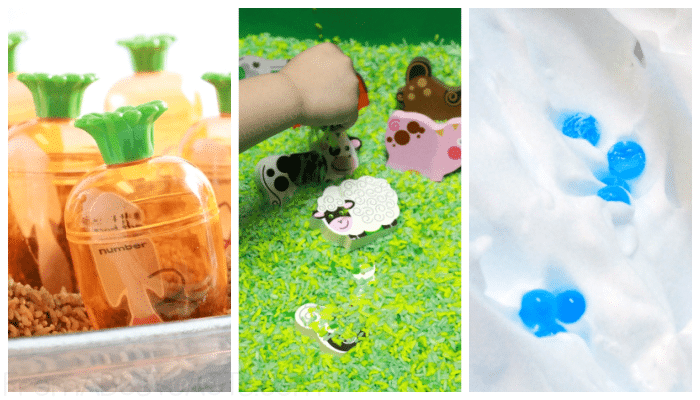
What age can you start sensory bins?
Typically, sensory bins are most popular with toddlers, preschoolers, and kindergarteners, but they can provide hours of educational fun for children of all ages as long as they’re properly supervised.
And supervision really is the most important part of adding sensory bins to your home or classroom, especially with younger children that may still try to put things in their mouths.
Even if some of your sensory bin ideas are taste-safe, you’ll still want to make sure that you’re keeping an eye on your students as they’re playing to ensure that everyone remains safe.
Why use sensory bins with your students?
Sensory bins may look like simply play, but in reality, they can help your students develop a number of important skills.
When we first started using them, I knew that they would allow us to explore different textures, but there is so much more to them than that!
Sensory activities are not only a lot of fun, they give your students the opportunity to explore with several of their senses including sight, sound, touch, and smell.
Sensory bins can also provide your students with opportunities to work on their social skills.
If you have a sensory bin large enough for multiple children to use at one time, they can work on their ability to take turns, work together, and communicate with each other.
They’re also a fantastic way to work on fine motor skills!
Adding things like scoops, spoons, funnels, and tongs can help your students build their small motor muscle strength that will help them hold and use things like writing utensils and scissors in the future.
Beyond that, sensory bins are also excellent at supporting cognitive development.
Depending on what you add to your bin, your students can work on a number of different and concepts like language development, the letters of the alphabet, number recognition, matching, sorting, and so much more!
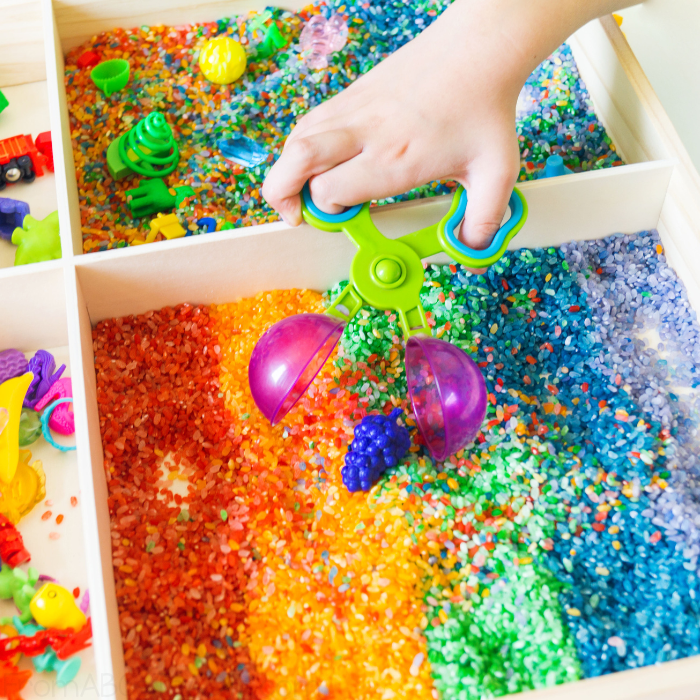
What do you put in a sensory bin?
Once you know what sensory bins are and how valuable they can be to your students, you’re ready for the fun part! It’s time to figure out what you’re going to put in them!
The first thing you’re going to decide on is what type of sensory bin filler you want to use. This will be the base of your sensory play and you can change it out as often as you like.
Some of our favorite sensory bin fillers include:
- rice
- dry beans
- kinetic sand
- shaving cream
- cloud dough
- dry pasta
- water
- soap foam
- rocks
- sand
- leaves
- cotton balls
- pom poms
- shredded paper
- flour
- popcorn kernels
- water beads
- oobleck
Keep in mind: Small items like popcorn kernels, water beads, etc. should only be used with older children and under heavy adult supervision.
This, of course, is not an all inclusive list.
There are so many amazing materials out there that can provide your students with a fantastic sensory experience! Your creativity really is the only limitation.
Adding Your Themed Items
While playing with some of those filler options is fun on its own, the real magic of a sensory bin is in the themed items that you add.
This can be as simple as adding a little food coloring to make rainbow rice, adding a few plastic bugs or toys for a spring themed bin, or hiding some letter cards for your students to dig out of an alphabet sensory bin.
All it takes is a little creativity and a few little additions (most of which can be found at your local dollar store) to create a great sensory bin for your students.
But if you’re looking for a few fun ideas to get you started, we’ve put together a list of some super simple sensory bins that your students are sure to love!
Sensory Bin Ideas
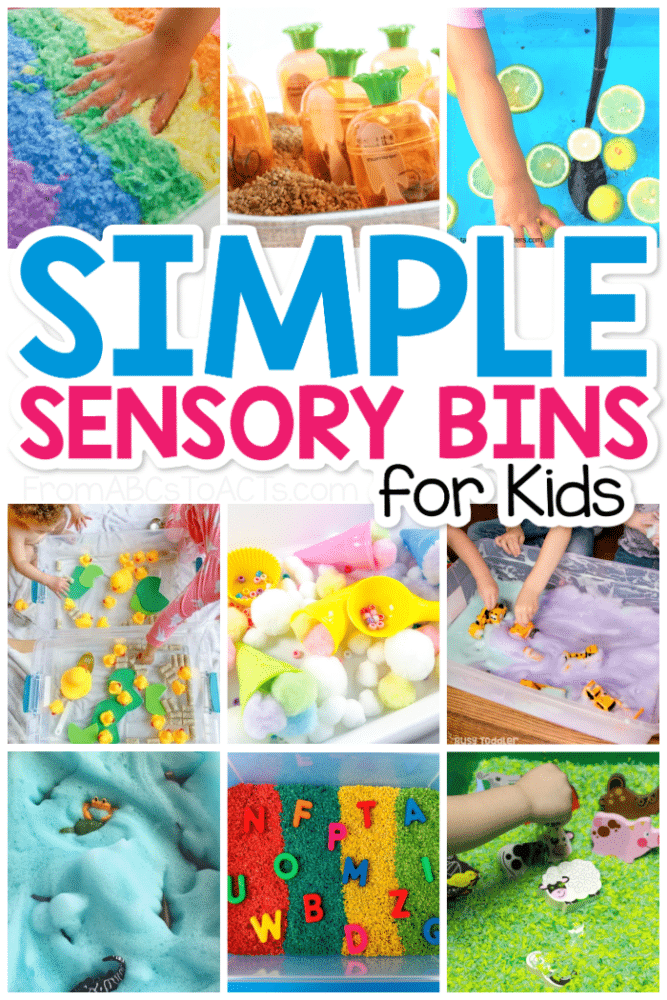
Sensory bins really don’t have to be crazy complicated to be a lot of fun! These ideas are all super simple and really easy to put together and will have your preschoolers engaged and learning for hours!
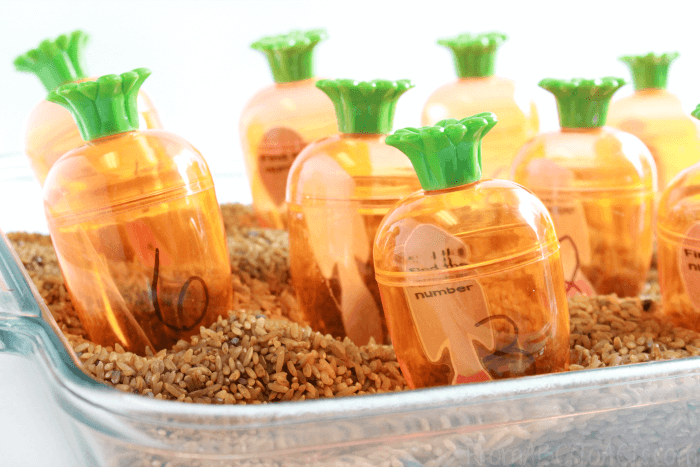
Gardening for Numbers Sensory Bin
Grab a couple of plastic carrots from your local dollar store, dye some rice dark brown, and you’ve got a fun spring themed sensory bin that will have your preschoolers working on number recognition!
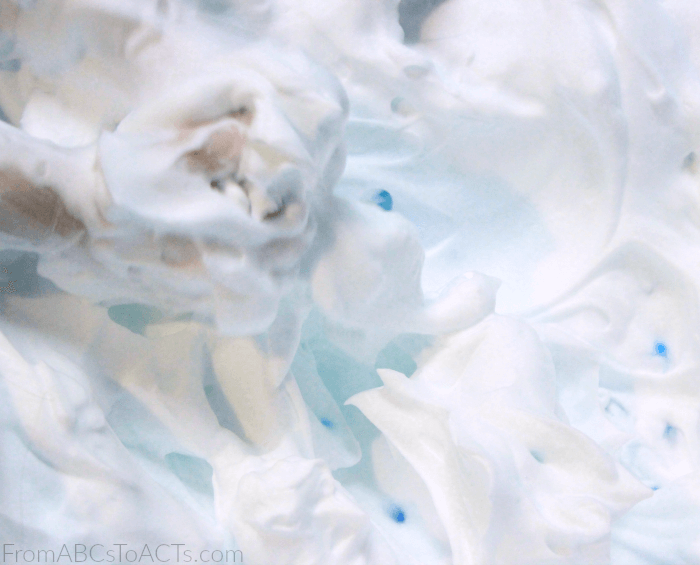
Raindrops in a Cloud Sensory Bin
Learning about the weather? This cloud themed sensory bin is such a fun way to introduce new textures and messy play while expanding on your science lesson at the same time!
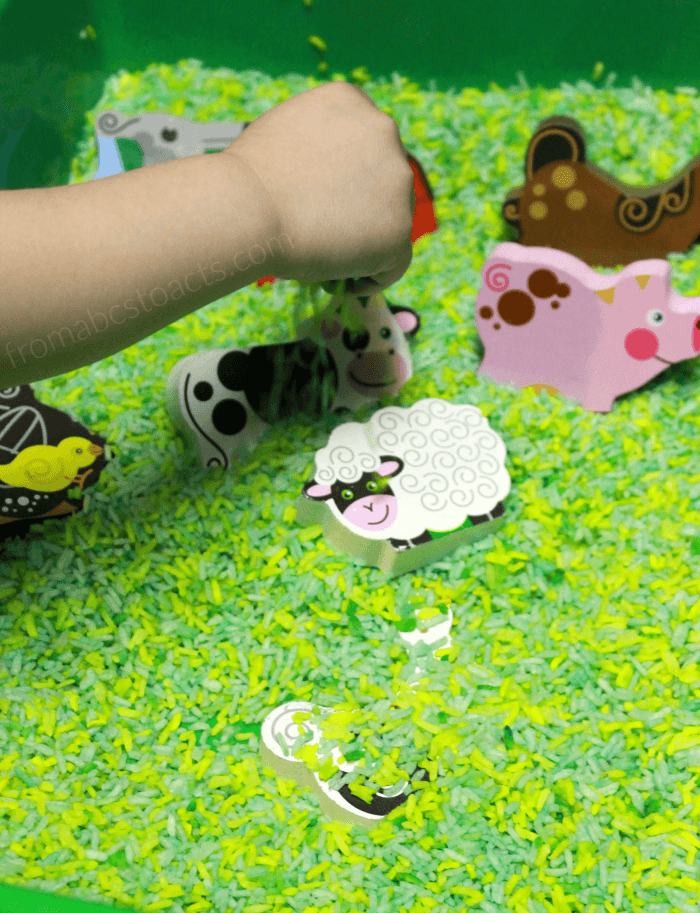
Farm Animals Round Up Sensory Bin
Perfect for little ones that are learning all about life on the farm, this animal round up sensory bin is so easy to put together and such a fun way for your students to learn about different animals.
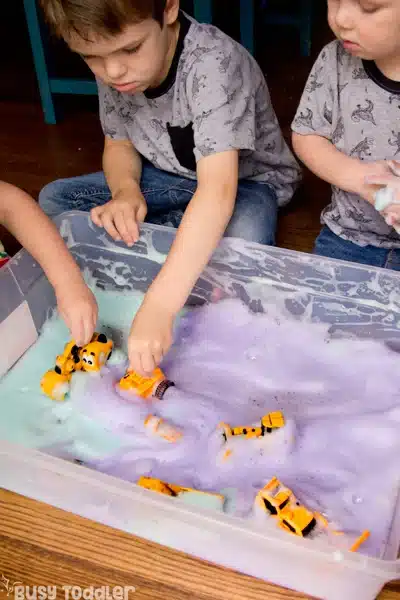
Bubble Trucks Sensory Activity
If you’ve worked with preschoolers for any length of time, then you know that not only do they love trucks, but they love bubbles even more! This bubble truck sensory activity gives you the best of both worlds by giving your students the chance to drive their trucks through some colored soap foam.
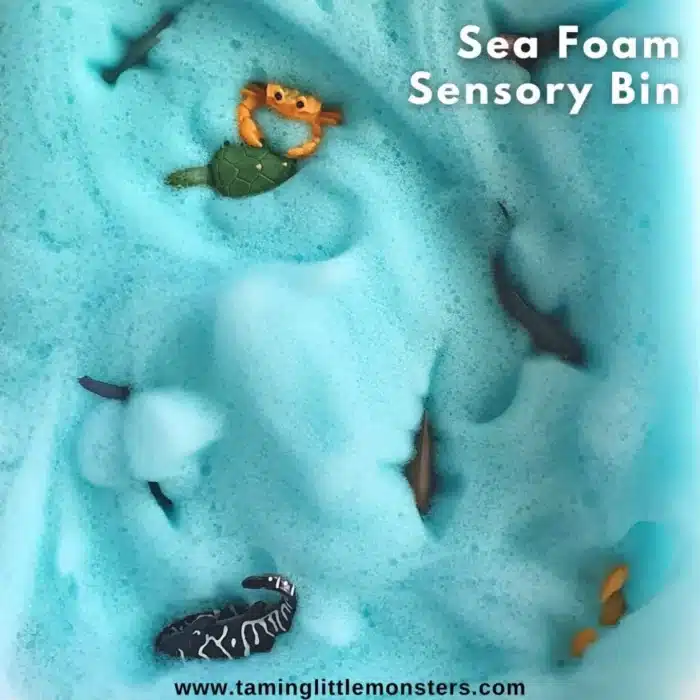
Sea Foam Sensory Bin
And speaking of soap foam, it’s the perfect filler for this sea foam sensory bin! Throw in some plastic fish toys and you’ve got a fantastic way to teach your preschoolers about the animals of the ocean!
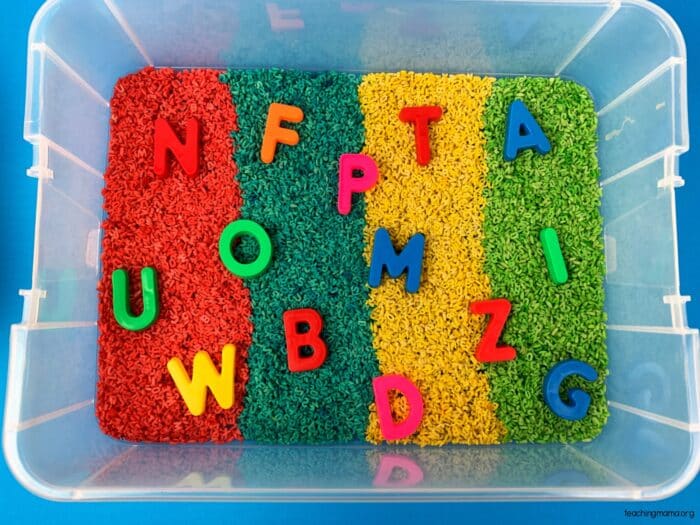
Colorful Alphabet Sensory Bin
Learning the letters of the alphabet can be both fun and colorful with this simple alphabet sensory bin! All you need is some dyed pasta and a few toys for your students to have hours of fun!
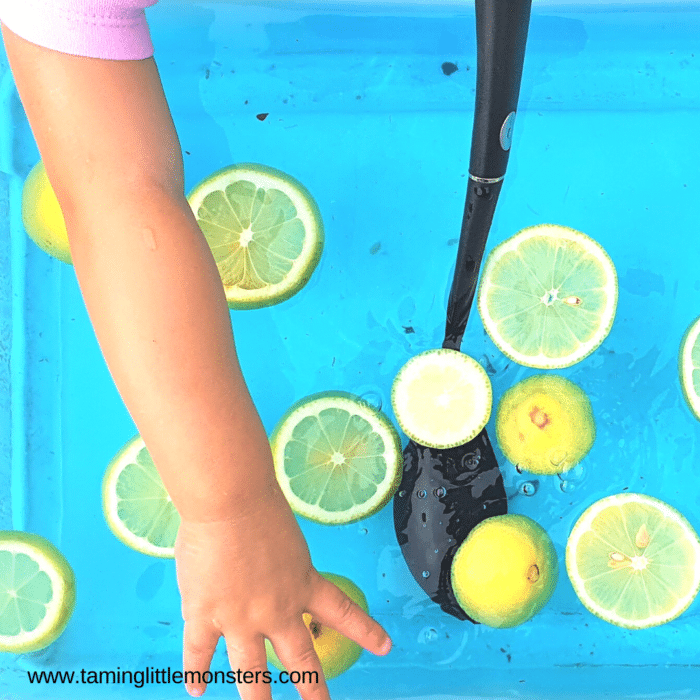
Summer Lemon Sensory Bin
If you’re looking for a simple summer sensory bin that’ll help you beat the heat, it doesn’t get any easier than this summer lemon sensory bin! Just a few basic materials and you’re all set for an afternoon of sensory fun!
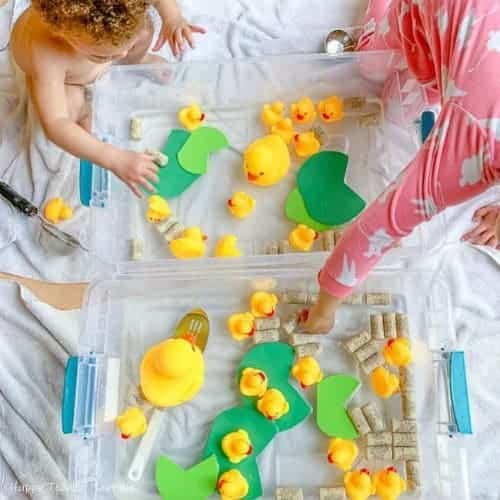
Feed the Ducks Sensory Bin
Water based sensory bins are some of the easiest ones to put together and this one is no exception!
But don’t let that fool you! Scooping, pouring, and dumping in a sensory tub like this duck themed one can provide your students with plenty of educational opportunities.
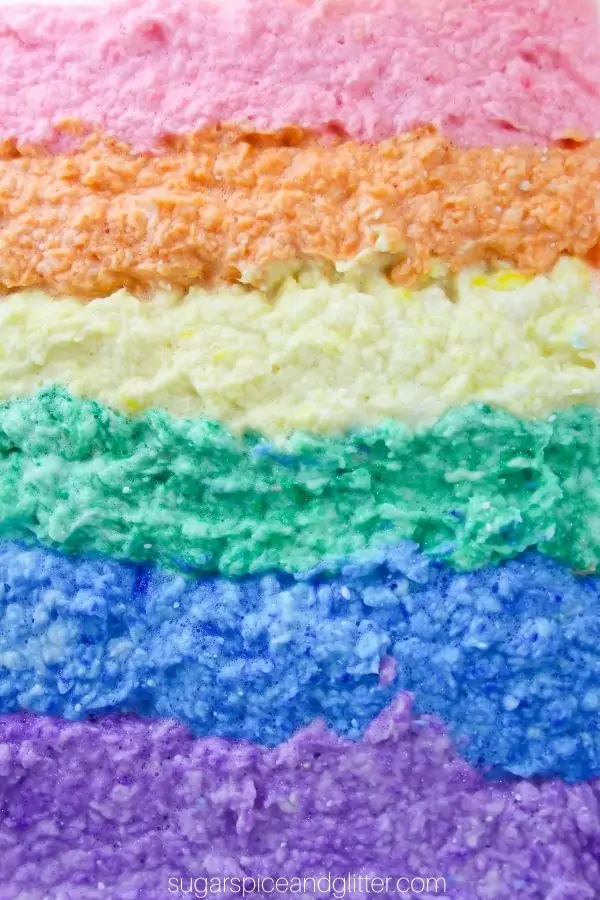
Rainbow Clean Mud Sensory Bin
Have you ever heard of clean mud? Well if you haven’t, then you’re going to want to check out this amazing sensory bin idea!
You skip the mess of real mud while your students get to play and squish their way through a rainbow of colors!

Ice Cream Cone Sensory Bin
If you’re looking for an idea that will give your preschoolers the chance to work on their fine motor skills, then this ice cream sensory bin is the one for you!
Between the scooping, pouring, and picking up, their small motor muscles will get quite the workout!